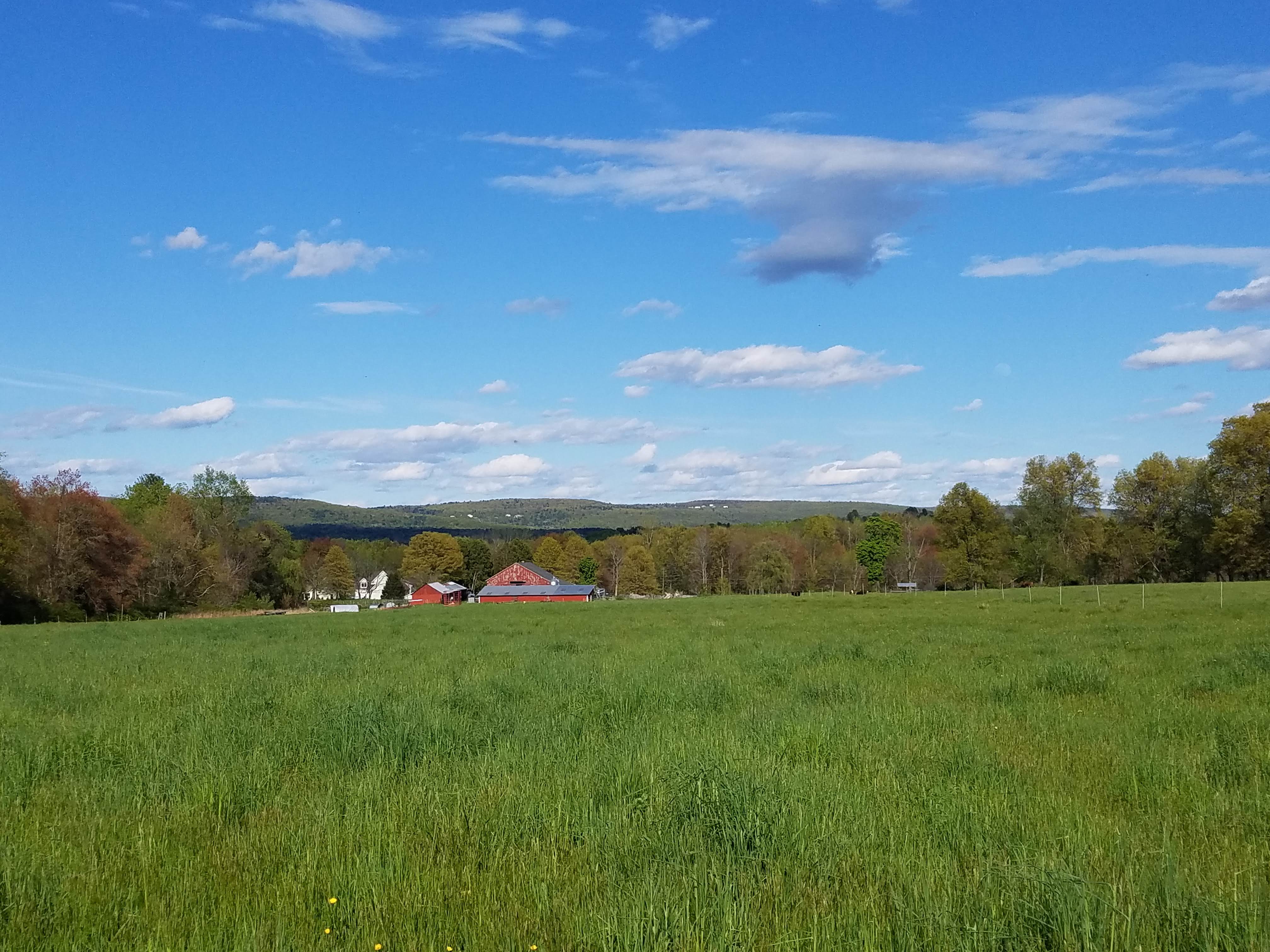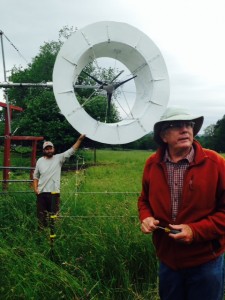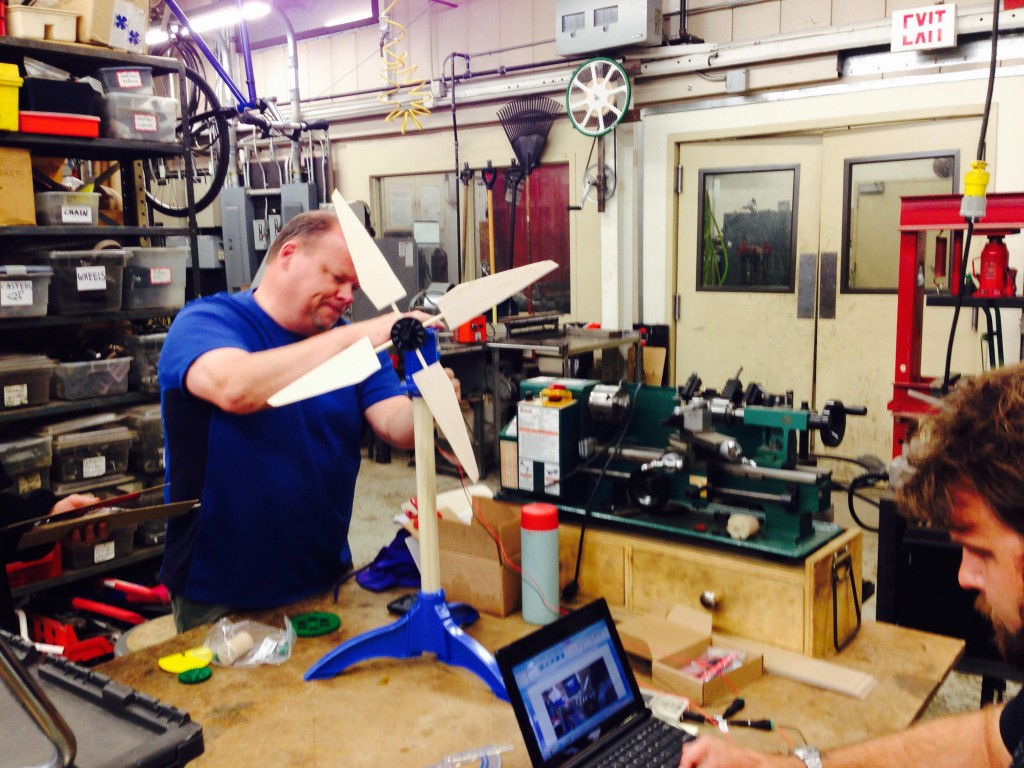Guest Post by Joshua Minot F12
Continued from Part I
In their second week at Hampshire College, students enrolled in the National Science Foundation Course Clean Energy Technology and Sustainable Agriculture moved on to investigate wind power and solar thermal technologies. Fred Wirth, associate professor of physics, introduced the class to wind energy by presenting his experimental wind turbine located on the Hampshire College farm. The design for the wind mill incorporates an innovative and low cost approach to increasing efficiency of wind power by fitting an external cowling around the turbines of a system—this gave students some ideas for their next activity: building and testing their own scale model wind turbines. After reviewing some of the key factors influencing wind production—such as weather conditions, site location, and blade design—the students were given the freedom to experiment with various system designs. Here Professor Wirth and Donna Cohn, visiting professor of applied design, assisted students with the construction of scale-model wind turbines in Hampshire’s Center for Design fabrication lab. Students were able to develop their own design, build the necessary components, and test the power output of their turbines. All the teams demonstrated an impressive degree of creativity in this exercise, and the final designs presented to the class showed an engagement with both the principles of wind power and the potential innovations to be had in the field.
The final exercise for the course was concerned with designing a solar thermal hot water heater intended for the production of cheddar cheese. Professor Wirth lead this part of the course and began by showing students the solar thermal system at the Hampshire Farm and presenting some of the principles of the technology, along with examples of certain components and various system designs (along with an overview of cheese making). From there, students set out in groups to design and price a system for the production of cheddar cheese for an operation roughly the size of Hampshire’s farm.
While the hands-on design exercises were perhaps the most exciting portion of the course—with students running around taking measurements, rapidly prototyping designs, and combining their diverse sets of existing knowledge in amazing ways—the time spent at Hampshire was also rounded out with more traditional class time. Class lectures and discussions were helpful in ensuring the whole class had an adequate understanding of the subject. Furthermore, talks with those currently working on renewable energy in agriculture helped to contextualize the coursework. Gerry Palano, alternative energy specialist for the Massachusetts Department of Agricultural Resources, gave a great overview of how renewable energy can affect agriculture, and presented notable case studies of successes on Massachusetts farms.
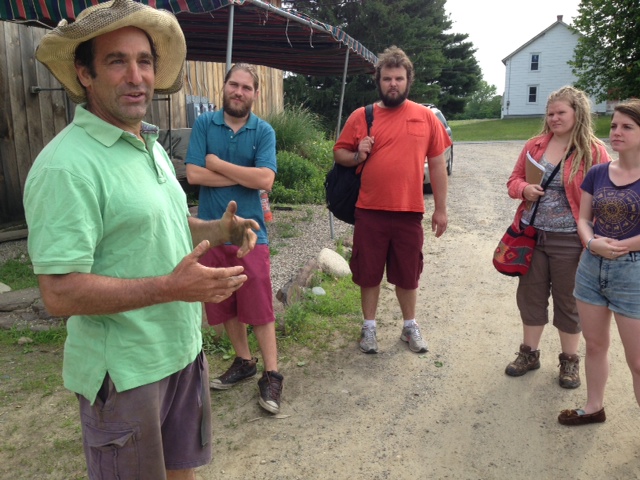
- On a field trip to Next Barn Over in Hadley, MA, Farmer Michael Doctor explains how solar energy supports farm operations.
To conclude the Hampshire portion of the course, the class took a trip to Next Barn Over farm in Hadley, MA, where farmer Michael Doctor explained how solar power has quite successfully been integrated into operations. The main barn has a sizeable south-facing roof entirely covered in solar panels and the farm has also made serious efforts to conserve energy in its storage areas. Michael Doctor has become an aggregator of renewable energy credits and is working to help those in the community generate income from their solar installations, while also providing another revenue stream for the farm.
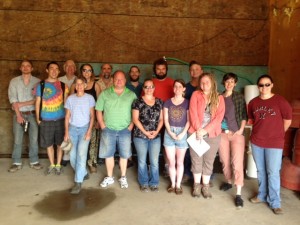
- The NSF funded course brought together students from Hampshire College, Holyoke Community College, and University of Massachusetts, Amherst.
As the students left Hampshire after their final day on campus, they were all well equipped to engage with the main considerations facing farms who are interested in integrating alternative energy into their operation. The subject matter was inherently interdisciplinary—tying together engineering, economics, physics, and other fields—but the students demonstrated a real interest and drive to cover as much ground as possible. These are just the type of thinkers we will need going forward if we wish to see agriculture—and those who make it possible—thrive in the 21st century. With this encouraging start, all those involved are excited to see how the course will continue to evolve over the next two years, with the class being offered in the summers of 2016 and 2017 as well.
Interested students from Holyoke Community College, Hampshire College, University of Massachusetts, Amherst, and Greenfield Community College should contact Beth Hooker, bhooker (at) hampshire.edu; John Gerber, jgerber (at) umass.edu; or Kate Maiolastesi, kmaiolatesi (at) hcc.edu.
